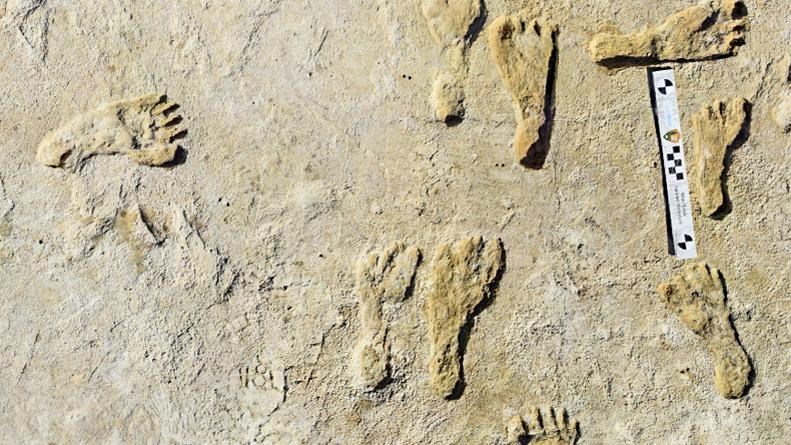Last updated: October 10, 2024
Place
Stories from the Ice Age

NPS Photo
Quick Facts
Amenities
2 listed
Information, Trailhead
What drew you to White Sands National Park today? Hiking? Sledding? Solitude? The Tularosa Basin has been a place where we as humans have been coming for thousands of years, even before the dunefield you see today formed. If you had been standing here during the last Ice Age, you would have witnessed a climate that was much cooler, wetter, and greener with a massive lake known as Lake Otero that was the size of the present-day Great Salt Lake in Utah. These were the conditions that lured the Ice Age megafauna like Columbian mammoths, giant ground sloths, dire wolves, camels, and more. This abundance of large game is likely what attracted these early human migrants to this basin. The presence of humans and megafauna at White Sands is not from the discovery of bones or artifacts, but from the preservation of fossilized footprints in the ancient lake sediments. Today, these fossilized footprints have to be cataloged and studied rapidly because as quickly as they appear at the surface, they will continue to erode away with the wind in just a matter of years. These footprints will never tell us everything we want to know about what human and megafauna life at the time was like, but they do provide snapshots. A group of humans stalked a giant ground sloth on a hunt. A woman struggled and slipped through the mud for over a mile with a set of children’s feet appearing occasionally as she briefly sets her child down before moving on. A giant ground sloth made a footprint that became a puddle where children’s footprints show them splashing in the water. Sets of teenagers fossilized footprints carbon-dated to around 23,000 years old, older than any definitive evidence of human habitation yet found in North America. What will be remembered about your visit to White Sands today?
